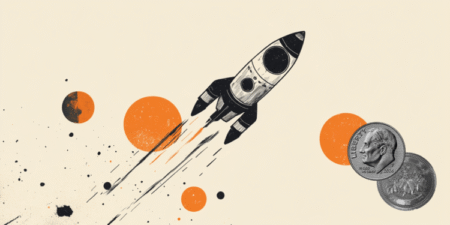Whether it’s long-distance travel, a small garden to tend each morning or quality time spent with loved ones, the retirement you envision deserves a clear financial strategy.
At the heart of that strategy is often a valuable tool: the Individual Retirement Account (IRA). But how can you be sure that your IRA is leading you to the retirement of your dreams? Here’s how to align your retirement accounts with your life goals.
Dreaming, yes. But put a figure on it
Retirement planning doesn’t start with an Excel spreadsheet. It starts with a vision. Would you like to live by a lake? Travel across America in an RV? Launch a personal project or simply live serenely?
This vision, however personal, forms the basis of your retirement goals. It gives meaning to your savings strategy and justifies your long-term efforts.
But dreaming is not enough. You need to translate these aspirations into concrete figures. How much do your plans cost? What will your annual expenses be in retirement? Where will you live? At what age do you want to stop working? Based on these elements, you can determine the size of the retirement capital you’ll need.
IRAs: Your ally in achieving your goals
Individual Retirement Accounts (IRAs) are powerful tools for building your retirement. Unlike a simple savings account, an IRA offers significant tax advantages, which vary according to the type chosen (Traditional or Roth IRA).
The Traditional account allows you to deduct your contributions from your taxable income, while the Roth IRA offers tax-free withdrawals provided you meet certain conditions.
In both cases, the IRA is a structured instrument for growing your savings over time. Thanks to the cumulative effect of compound interest and the potential growth of financial markets, it can help you reach your retirement goals more quickly than other forms of savings.
A strategy aligned with your retirement goals
It’s not enough to have an IRA, it has to be aligned with your true retirement goals.
An asset allocation adapted to your time horizon
If you’re still a long way from retirement, you can afford a growth strategy, with greater exposure to Equities.
As you approach retirement, a transition to more stable investments (Bonds, cash) can secure your assets.
Regular, adjusted contributions
Saving automatically, every month or every paycheck, is one of the best ways to reach your goals.
Remember to take advantage of annual contribution limits and, if you’re over 50, catch-up contributions authorized by the IRS.
Integration into your overall retirement plan
IRAs don’t work in a vacuum. They often complement other sources such as a 401(k), a company retirement plan or Social Security benefits.
An effective strategy takes all these elements into account.
The role of Social Security in the equation
Social Security benefits, often seen as a minimum guarantee, need to be integrated into your retirement plan.
Delaying their activation (until age 70) can significantly increase your monthly income.
A good balance between IRA withdrawals and Social Security benefits can optimize your tax situation while securing your income.
Beware of taxes in retirement
Withdrawals from a Traditional IRA are taxable. This means that your withdrawal strategy must be carefully thought out: At what age should you withdraw? At what pace? Should you convert to a Roth IRA before retirement?
A well-designed plan will maximize your net income while limiting the tax impact.
Review and adjust regularly
Your retirement goals may evolve as a result of changes in your life, health or even priorities. So it’s essential to review your plan at least once a year.
A financial advisor can help you adjust your allowances, contributions and withdrawal schedule to stay in line with your retirement planning.
Building the retirement you deserve
Aligning your IRA with your retirement goals is more than just saving, it’s planning a life project.
It’s about building a future where your desires can become reality, thanks to a well-thought-out financial strategy, adapted tools like the Individual Retirement Account (IRA), and a clear vision of what you expect from this new stage.
IRAs FAQs
An IRA (Individual Retirement Account) allows you to make tax-deferred investments to save money and provide financial security when you retire. There are different types of IRAs, the most common being a traditional one – in which contributions may be tax-deductible – and a Roth IRA, a personal savings plan where contributions are not tax deductible but earnings and withdrawals may be tax-free. When you add money to your IRA, this can be invested in a wide range of financial products, usually a portfolio based on bonds, stocks and mutual funds.
Yes. For conventional IRAs, one can get exposure to Gold by investing in Gold-focused securities, such as ETFs. In the case of a self-directed IRA (SDIRA), which offers the possibility of investing in alternative assets, Gold and precious metals are available. In such cases, the investment is based on holding physical Gold (or any other precious metals like Silver, Platinum or Palladium). When investing in a Gold IRA, you don’t keep the physical metal, but a custodian entity does.
They are different products, both designed to help individuals save for retirement. The 401(k) is sponsored by employers and is built by deducting contributions directly from the paycheck, which are usually matched by the employer. Decisions on investment are very limited. An IRA, meanwhile, is a plan that an individual opens with a financial institution and offers more investment options. Both systems are quite similar in terms of taxation as contributions are either made pre-tax or are tax-deductible. You don’t have to choose one or the other: even if you have a 401(k) plan, you may be able to put extra money aside in an IRA
The US Internal Revenue Service (IRS) doesn’t specifically give any requirements regarding minimum contributions to start and deposit in an IRA (it does, however, for conversions and withdrawals). Still, some brokers may require a minimum amount depending on the funds you would like to invest in. On the other hand, the IRS establishes a maximum amount that an individual can contribute to their IRA each year.
Investment volatility is an inherent risk to any portfolio, including an IRA. The more traditional IRAs – based on a portfolio made of stocks, bonds, or mutual funds – is subject to market fluctuations and can lead to potential losses over time. Having said that, IRAs are long-term investments (even over decades), and markets tend to rise beyond short-term corrections. Still, every investor should consider their risk tolerance and choose a portfolio that suits it. Stocks tend to be more volatile than bonds, and assets available in certain self-directed IRAs, such as precious metals or cryptocurrencies, can face extremely high volatility. Diversifying your IRA investments across asset classes, sectors and geographic regions is one way to protect it against market fluctuations that could threaten its health.
Read the full article here
















